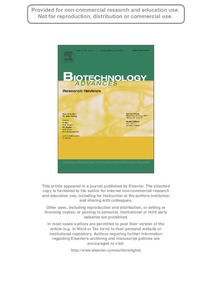| dc.description.abstract | The annual harvest of banana and plantain (Musa spp.) is approximately 145 million tons worldwide. About 85% of
this global production comes from small plots and kitchen or backyard gardens from the developingworld, and only
15% goes to the export trade. Musa acuminata and Musa balbisiana are the ancestors of several hundreds of parthenocarpic
Musa diploid and polyploid cultivars, which show multiple origins through inter- and intra-specific hybridizations
from these two wild diploid species. Generating hybrids combining host plant resistance to
pathogens and pests, short growth cycles and height, high fruit yield, parthenocarpy, and desired quality from
the cultivars remains a challenge for Musa crossbreeding, which started about one century ago in Trinidad. The success
of Musa crossbreeding depends on the production of true hybrid seeds in a crop known for its high levels of
female sterility, particularly among polyploid cultivars. All banana export cultivars grown today are, however, selections
from somatic mutants of the group Cavendish and have a very narrow genetic base, while smallholders in sub-
Saharan Africa, tropical Asia and Latin America use some bred-hybrids (mostly cooking types). Musa improvement
goals need to shift to address emerging threats because of the changing climate. Innovative cell and molecular
biology tools have the potential to enhance the pace and efficiency of genetic improvement in Musa. Micropropagation
has been successful for high throughput of clean plantingmaterials while in vitro seed germination assists
in obtaining seedlings after inter-specific and across ploidy hybridization. Flow cytometry protocols are used
for checking ploidy among genebank accessions and breeding materials. DNA markers, the genetic maps based
on them, and the recent sequencing of the banana genome offer means for gaining more insights in the genetics
of the crops and to identifying genes that could lead to accelerating Musa betterment. Likewise, DNA fingerprinting
has been useful to characterize Musa diversity. Genetic engineering provides a complementary tool to Musa
breeders who can introduce today transgenes that may confer resistance to bacteria, fungi and nematodes, or enhance
pro-vitamin A fruit content. In spite of recent advances, the genetic improvement of Musa depends on a
few crossbreeding programs (based in Brazil, Cameroon, Côte d'Ivoire, Guadeloupe, Honduras, India, Nigeria,
Tanzania and Uganda) or a handful of genetic engineering endeavors (Australia, Belgium, India, Kenya, Malaysia
and Uganda). Development investors (namely international aid and philanthropy) should therefore increase
their funding to genetically enhance this crop that ranks among the 10-top staple foods of the developing world. |

